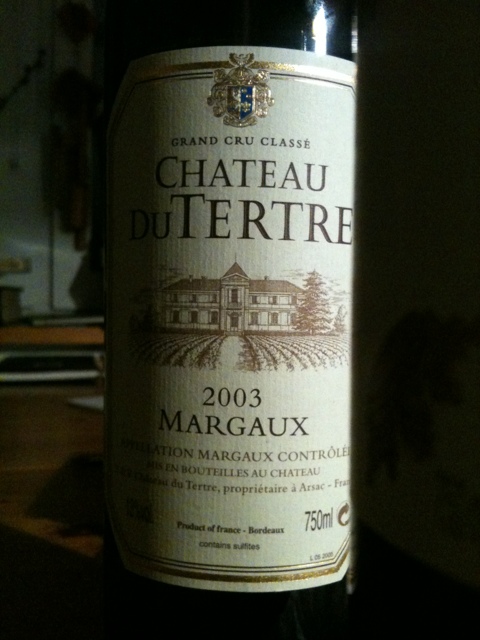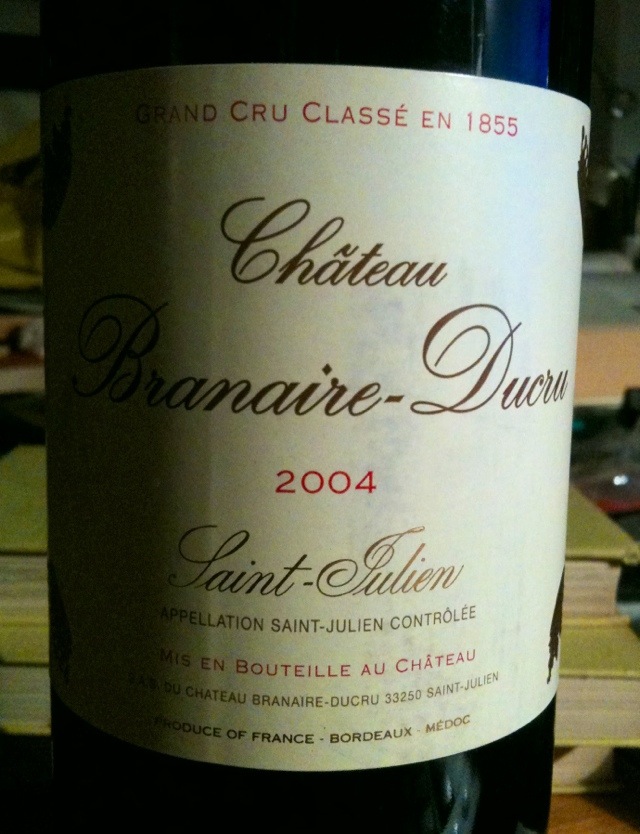Tricky timing
Posted on 31 October 2011
A friend offered me these two bottles of Bordeaux for assessment. Not so much of the wines themselves but of his cellar: he’s worried about storage conditions there, and feared some wines are ageing prematurely.
My friend can sleep in peace – the wines were in fine shape and ageing gracefully. But the tasting proved interesting from another point of view. These two expensive classified wines come from vintages considered ready to drink now. The Château du Tertre 2003 initially didn’t seem so ready. Starting with a touch of animal brett, it shows the torrid vintage in a certain baked, almost vinegarish edge to the fruit, but the overall impression on the palate is of a nicely fruity wine, expressive and tightly tannic. The acidity was also nicely fresh. 2003s don’t get very good press at the moment: e.g. Jancis Robinson urged to drink them up in this article. I don’t have a lot of data points on that but this Margaux was better than expected.
The Château Branaire-Ducru 2004 in many ways was the exact opposite. Less acidity, a full, concentrated wine of density and, initially, considerable sweetness of fruit. Oak is completely integrated and the whole comes across as a very sensual, almost plush Merlot-driven (much more than you’d expect from this château with over 70% Cabernet Sauvignon in the vineyards) package. It’s an obviously good wine, but in a style I don’t cherish, and tonight I’d rather drink the 2003 Tertre, especially with food.
The above were my impressions from day 1, poured straight from the bottle after opening, no decanting. Interestingly on day 2 both wines have changed beyond recognition. The Tertre has oxidised, the minor lifted notes now becoming full-fledged volatile acidity, and there is no fruit left, having deteriorated into unpleasant aromatics of boiled cabbage. The Branaire has also changed – but for the better. The sweet fatness has given to a more nuanced, more classic Bordeaux expression. The quality of fruit is lovely, as is the fine tannic grain and sense of detail.
The big issue here is – which showing is representative? Experienced Bordeaux tasters would easily have spotted the emergency signs in the sour cherry edginess of the 2003 Tertre, as well as foreseeing the development of the 2004 Branaire beyond the initial sweetness. This guesswork is made even easier if you have past experience with these two châteaux. But what about casual drinkers? Of course everybody should know that classified Bordeaux is a wine to lay down, decant and otherwise enjoy over time, but I think it’s pretty difficult for a non-expert to grasp the complexity of the situation. It’s also tricky for wine writers. How do you communicate development over time of an opened bottle? How do you give justice to Day 2 improvement without sacrificing Day 1 enjoyment – the latter being vital to 99% of normal drinkers?
Disclosure
Both wines were received as gifts from a wine friend.



